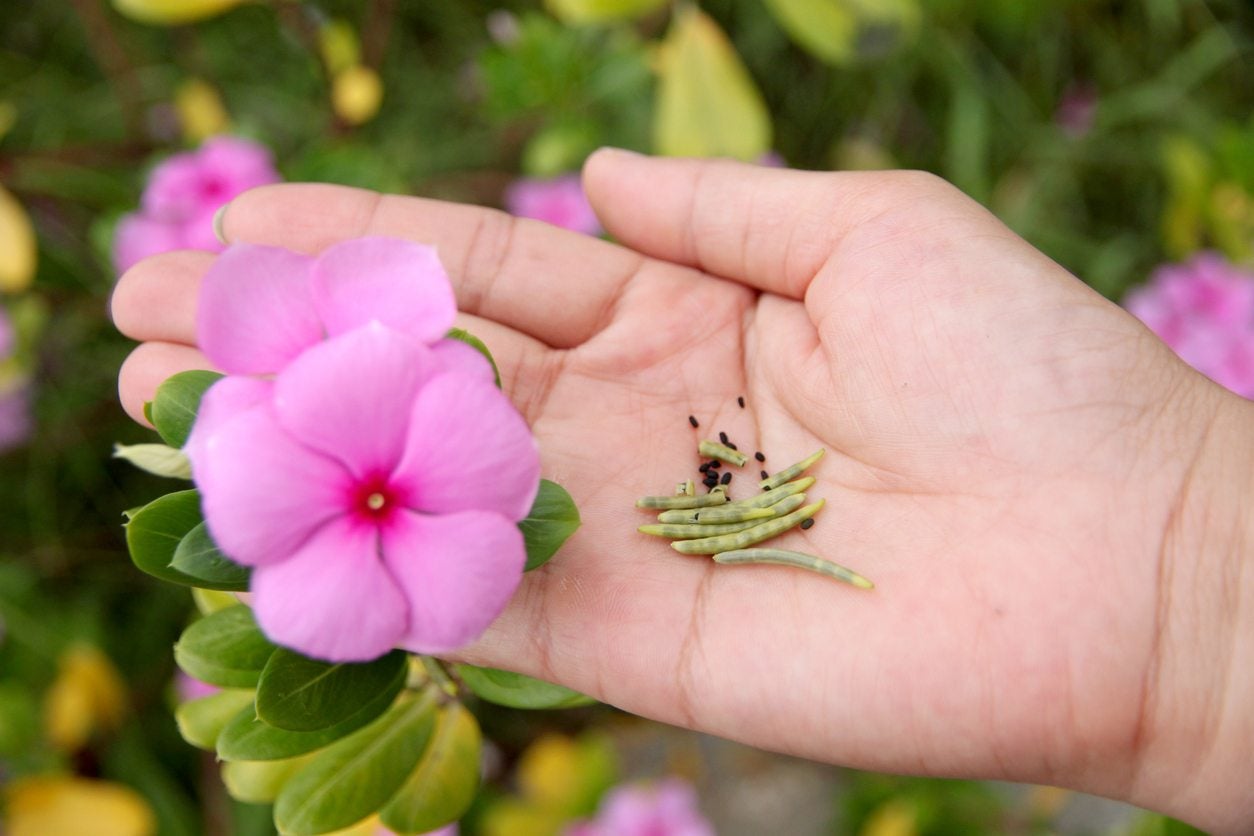Vinca, also known as periwinkle is an annual flower that blooms abundantly in summer heat. Its flowers come in a range of bright colors like red, orange pink, purple, and white. Vinca makes an excellent garden bedding plant and it also thrives in containers.
To get vinca flowers blooming as early as possible in summer, the seeds need to be started indoors. Here is a complete guide to sowing and planting vinca seeds.
When to Start Vinca Seeds Indoors
Vinca seeds should be started indoors 12-15 weeks before your last expected spring frost date. This gives the seedlings time to develop strong root systems before being moved outside.
To determine your frost date, check with your local extension service Generally, aim to sow vinca seeds in late January to early March for transplanting into the garden in May.
Starting the seeds too early can result in tall, leggy plants, so time it for approximately 3-4 months before you want flowers.
How to Plant Vinca Seeds
Vinca seeds require light to germinate. They are small and should be sown on the soil surface rather than buried. Follow these steps:
-
Fill seed starting flats or cell packs with seed starting mix. Water thoroughly and let drain.
-
Sow seeds on the surface and gently press them into the soil. Space 1-2 inches apart.
-
Cover trays with a sheet of plastic wrap or damp newspaper to create darkness.
-
Keep the soil moist at 65-70°F until sprouted.
-
Remove the cover as soon as the first seedlings emerge in 14-21 days.
-
Provide plenty of light and apply a dilute starter fertilizer solution every 2-3 weeks.
-
Harden off seedlings for 7-10 days before transplanting outside after all danger of frost has passed.
Growing Conditions for Vinca
Vinca thrives in full to partial sun. It prefers a site with well-draining soil and average moisture. Amend soil with compost or leaf mold to improve drainage in heavy clay soils before planting.
Space transplants 8-12 inches apart in the garden. Water new plants regularly until established. Then water weekly if rainfall is lacking.
Remove spent flowers to prolong blooming. Apply a liquid bloom-boosting fertilizer every 2-3 weeks.
Common Pests and Diseases
Vinca is generally pest and disease resistant if given proper growing conditions. Potential problems include:
-
Fungal leaf spot and root rot in wet conditions – improve drainage
-
Spider mites in hot, dry weather – use insecticidal soap
-
Aphids – spray off with water or use neem oil
-
Whiteflies – apply sticky traps and insecticidal soap
Tips for Growing Vinca
Here are some useful tips to get the most out of vinca in your garden:
-
Pinch young plants to promote bushy growth
-
Use vinca as an edging plant or groundcover
-
Underplant vinca around taller plants to hide bare stems
-
Mix colors for a vibrant effect
-
Grow vinca in containers and window boxes
-
Save seeds from open pollinated varieties for future years
-
Bring containers indoors before first fall frost
With proper planning and care, vinca is one of the most flower-productive annuals for gardens and containers. Time your seed starting right and you’ll have gorgeous vinca color from midsummer until frost.
Categories Browse By Topic:

When You Should Plant Vincas (Periwinkles)
FAQ
How long does it take to grow vinca from seed?
Can I plant vinca seeds directly in the ground?
When should vinca be planted?
What is the season for vinca seeds?
When should I plant vinca?
In colder regions, it is best to wait until all danger of frost has passed and the soil has warmed up before planting vinca outdoors. This is usually in late spring or early summer. If you prefer to start vinca from seeds, you can start them indoors about 10 to 12 weeks before the last expected frost date.
Can you grow Vinca from seeds?
If you want to expand your vinca collection or share plants with friends and family, you can propagate vinca through seeds or cuttings. To grow vinca from seeds, start by collecting mature seeds from the dried seed pods of your existing plants. Sow the seeds in a well-draining seed-starting mix and keep the soil consistently moist.
How do you grow Vinca?
Vinca is a beautiful and easy-to-grow flower that can add a splash of color to any garden. With its low-maintenance care, vinca is a great choice for gardeners of all levels. Sow vinca seeds indoors 6-8 weeks before the last frost. Fill a seed tray with a mixture of potting soil and sand. Sprinkle the vinca seeds on the surface of the soil.
When is the best time to sow Vinca seeds?
Vinca, also known as periwinkle or creeping myrtle, is a popular annual flower that is easy to grow from seed. However, the best time to sow Vinca seeds may vary depending on your location and climate. In general, the ideal time to sow Vinca seeds is in the early spring, after the last frost has passed.
- The Ultimate Guide to Growing Strawberries in Raised Beds - August 8, 2025
- No-Dig Garden Beds: The Easiest Way to Grow a Beautiful Garden - August 6, 2025
- How to Protect and Preserve Wood for Raised Garden Beds - August 6, 2025

